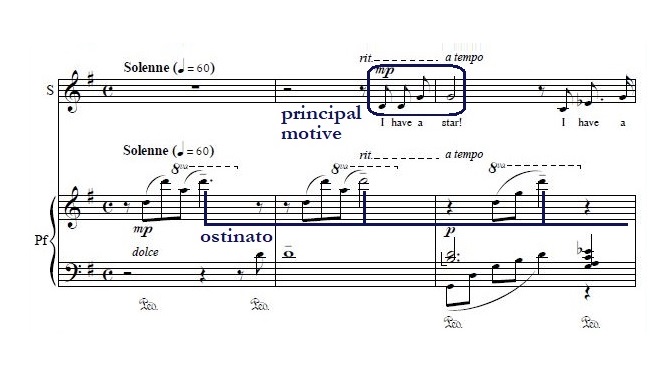From Words to Music (“I Have a Star,” Part 1)
The text for my vocal composition “I Have a Star” originated as a poem I had written around 1983-1984, while dealing with a spiritual crisis that had brought on deep depression. Only years later did I conceive the idea of setting the poem to music. Yet when I finally did so, the music seemed to grow naturally and spontaneously out of the words, almost as if the music had been implicit in the words all along. I set it originally for mixed chorus with soprano solo and piano accompaniment (1985), later for mixed chorus with tenor solo and piano (1986), and finally for soprano solo, string quartet, and piano (2016). The verses of the text naturally resolve into an ABA musical form, but with a sense of emotional crescendo superimposed across the whole composition.
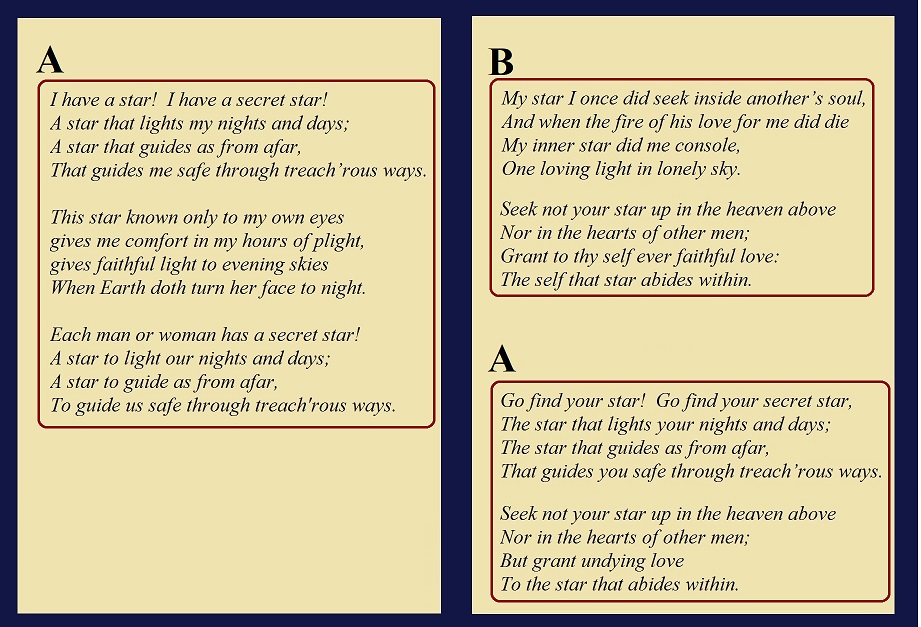
The mood in the opening is quiet, solemn, and mysterious. First the piano sounds a series of four tones, rising through an overtone series to the highest D on the keyboard, and that D initiates an ostinato that is repeated on beat 3 thoughout the first dozen measures and much of the rest of the composition. Already in that persistent, brightly ringing tone we can imagine the “star” of the title, like a steady and reliable beacon to guide one’s life. When the soprano enters, the words “I have a star!” are realized by a four-note motive that will pervade the entire piece. The style of the melody is basically diatonic (in G major), but colored by modal borrowings that add to the atmosphere of mystery and wonder. Note the lowered sixth degree (E-flat) near the end of bar 3, borrowed from the parallel minor, and the raised fourth degree (C-sharp) near the end of bar 7, pointing toward Lydian mode. A parallel-fifth progression in the left hand of the piano part of bars 5-9 adds to the otherworldly atmosphere.
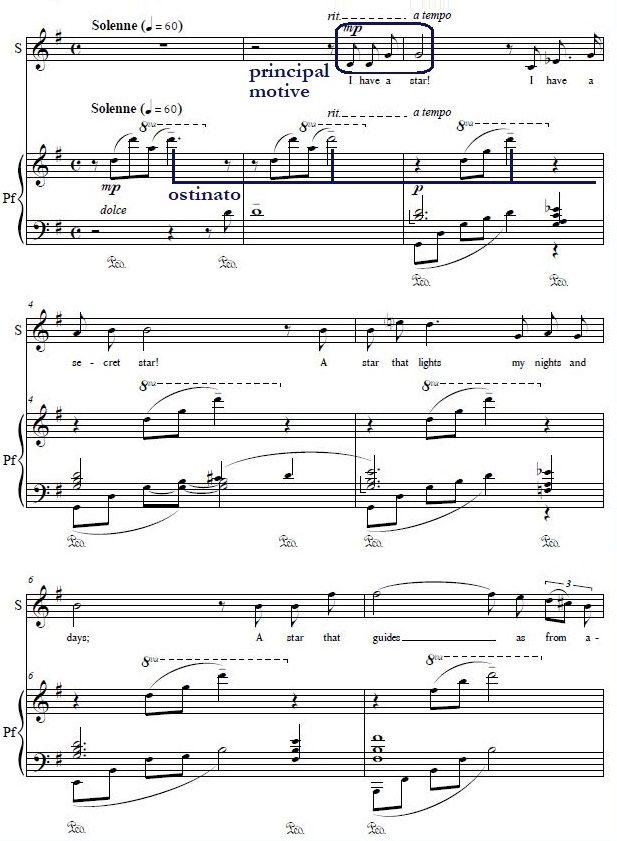
The strings (or, in the earlier versions, the voices of the mixed chorus) join in at bar 11, pianissimo at first (and using mutes through the initial A section), with rich, warm harmonies, and the texture is embellished by frequent imitations among the voice and the five accompanying instruments.
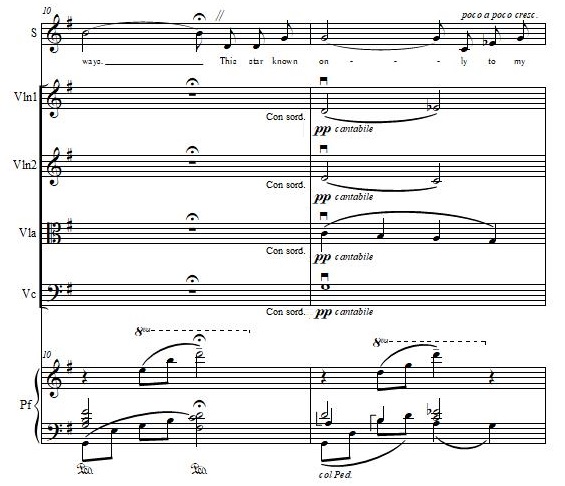
The star guided me safely through the treacherous straits of the crisis. In bars 25-26, at the end of the initial A section, the perils of those “treach’rous ways” are conveyed by a tritone leap in the soprano part and chromaticism in the accompanying lines.
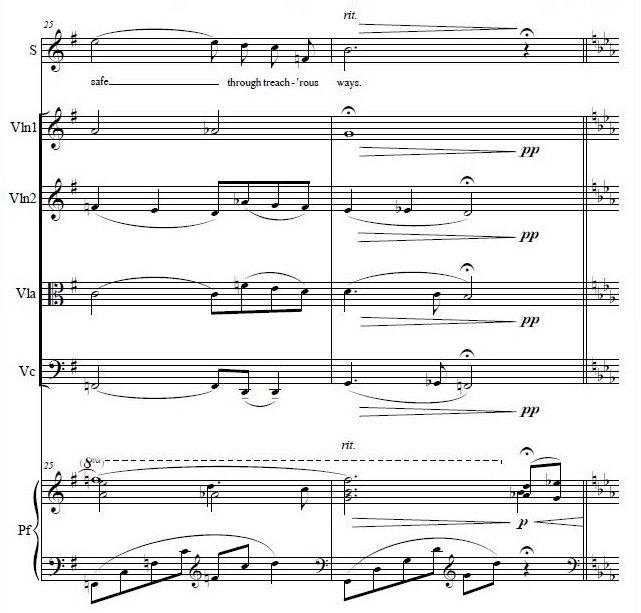
As the A section closes, the identity of the star remains a mystery. That mystery will be revealed in the next part of the song. My next two posts to this blog will examine how the meaning of the words is conveyed and enhanced by the music through the remainder of the work. UPDATE: Part 2 is here.

